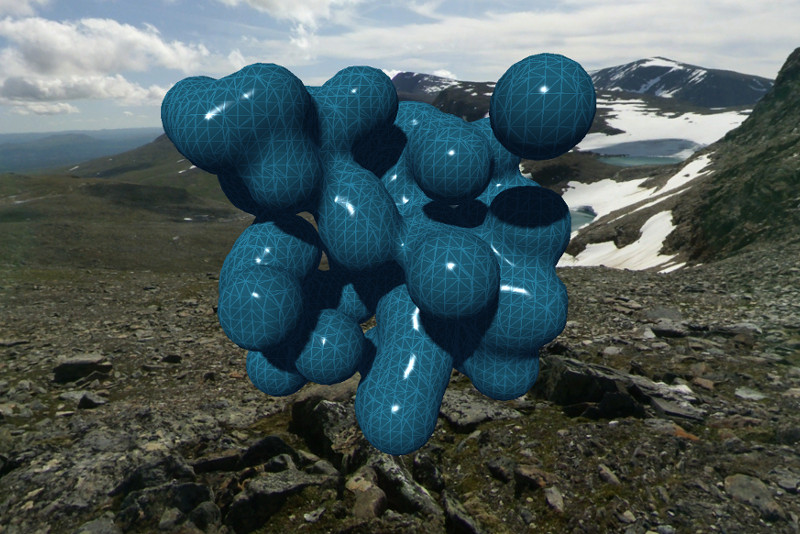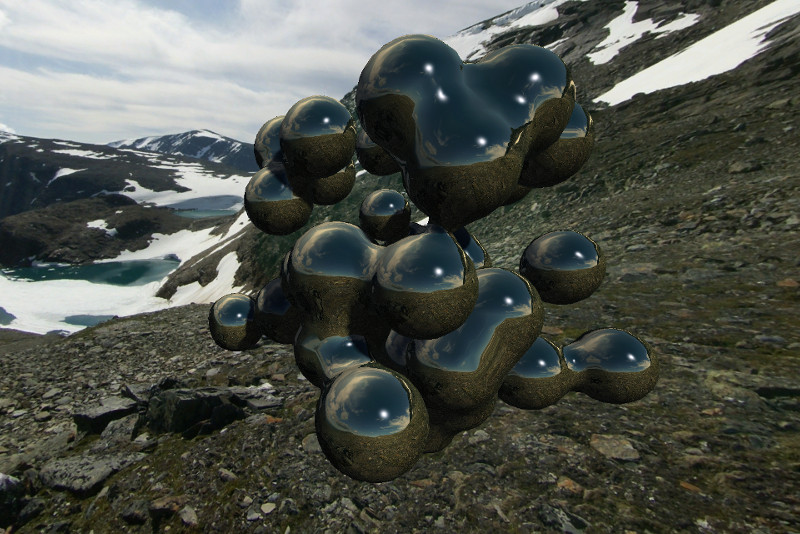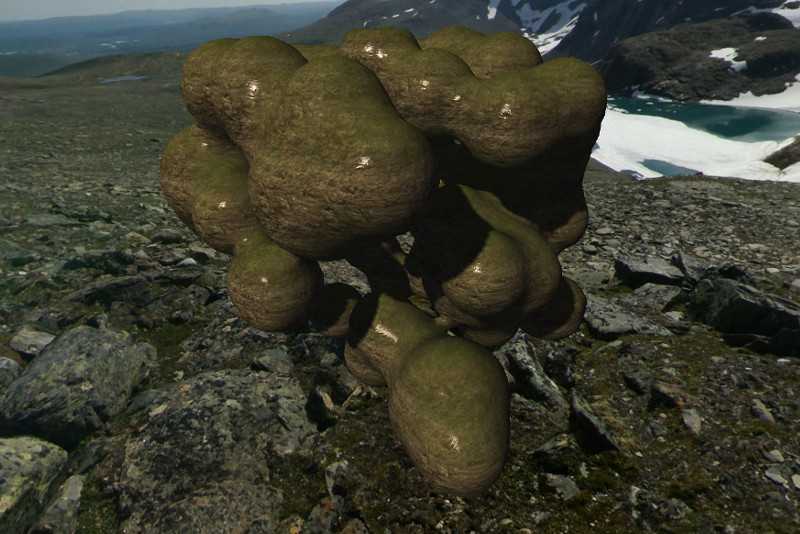Voxel-Based Metaballs
Inspired by the blue repulsion gel featured in Valve Software's Portal 2, I developed this voxel-based metaball simulator using C++, DirectX 11, and HLSL. The surfaces of the metaballs are extracted from a voxel grid each frame with a GPU-based implementation of the Marching Cubes algorithm. The metaball surfaces are shaded with a flat color, reflectivity (where the surfaces reflect a 3D environment map), or a triplanar terrain texturing technique. I also used this simulator to generate surreal, voxel-based terrains. These terrains produced interesting results, but they were not the main focus of the project.
I developed this simulator as a part of an Undergraduate Student Research Award (USRA) at the University of Regina. I received this award during the Spring/Summer semester of 2012, when I was entering my fourth and final year as an undergraduate student. I worked on this research project under the supervision of Dr. Howard Hamilton, who later became the supervisor of my master's thesis research.



